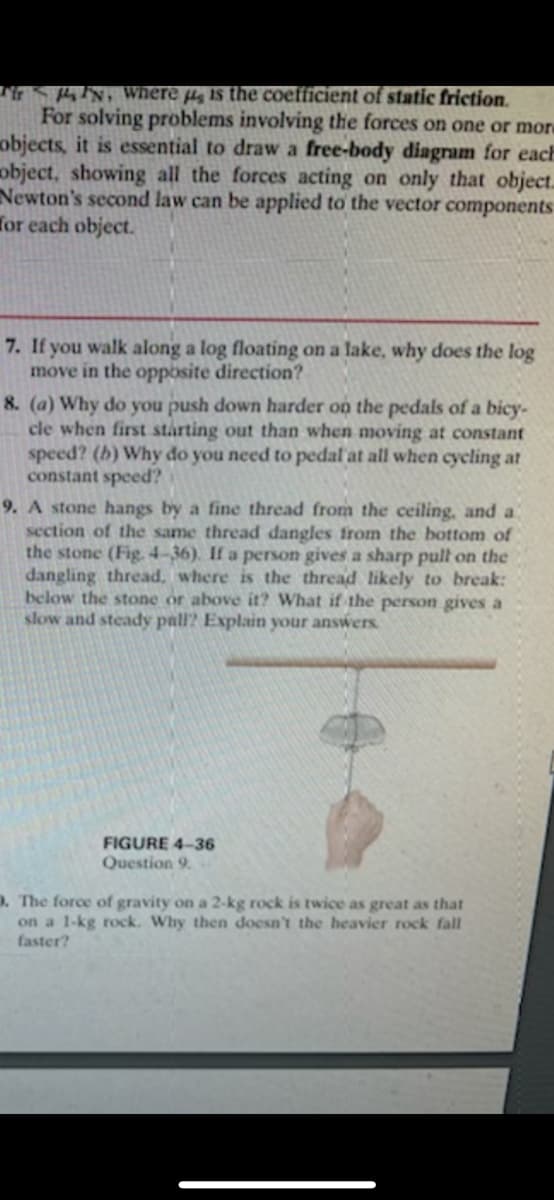University Physics Volume 1
18th Edition
ISBN:9781938168277
Author:William Moebs, Samuel J. Ling, Jeff Sanny
Publisher:William Moebs, Samuel J. Ling, Jeff Sanny
Chapter5: Newton's Law Of Motion
Section: Chapter Questions
Problem 23P: While sliding a couch across a floor, Andrea and Jennifer exert forces FA and FJ on the couch....
Related questions
Question
Question 7

Transcribed Image Text:Hy IN, Where µ̟ 1s the coefficient of static friction.
For solving problems involving the forces on one or mora
objects, it is essential to draw a free-body diagram for each
object, showing all the forces acting on only that object.
Newton's second law can be applied to the vector components
for each object.
7. If you walk along a log floating on a lake, why does the log
move in the opposite direction?
8. (a) Why do you push down harder on the pedals of a bicy-
cle when first stárting out than when moving at constant
speed? (b) Why do you need to pedal at all when cycling at
constant speed?
9. A stone hangs by a fine thread from the ceiling, and a
section of the same thread dangles from the bottom of
the stone (Fig. 4-36). If a person gives a sharp pult on the
dangling thread, where is the thread likely to break:
below the stone or above it? What if the person gives a
slow and steady pall? Explain your answers
FIGURE 4-36
Question 9.
D. The force of gravity on a 2-kg rock is twice as great as that
on a 1-kg rock. Why then doesn't the heavier rock fall
faster?
Expert Solution
This question has been solved!
Explore an expertly crafted, step-by-step solution for a thorough understanding of key concepts.
This is a popular solution!
Trending now
This is a popular solution!
Step by step
Solved in 2 steps

Recommended textbooks for you

University Physics Volume 1
Physics
ISBN:
9781938168277
Author:
William Moebs, Samuel J. Ling, Jeff Sanny
Publisher:
OpenStax - Rice University

College Physics
Physics
ISBN:
9781938168000
Author:
Paul Peter Urone, Roger Hinrichs
Publisher:
OpenStax College

University Physics Volume 1
Physics
ISBN:
9781938168277
Author:
William Moebs, Samuel J. Ling, Jeff Sanny
Publisher:
OpenStax - Rice University

College Physics
Physics
ISBN:
9781938168000
Author:
Paul Peter Urone, Roger Hinrichs
Publisher:
OpenStax College